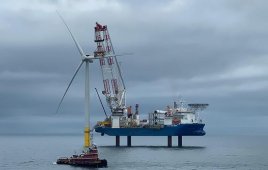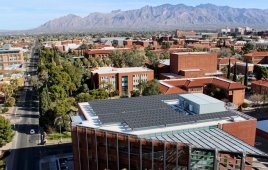 The FAA’s alleged 500-ft height limit for wind turbines often comes up in discussions. The figure is of greater interest lately because turbines with rotors of at least 105-m diameters on 100-m towers (frequently referred to as the new norm) will exceed the 500-ft mark.
The FAA’s alleged 500-ft height limit for wind turbines often comes up in discussions. The figure is of greater interest lately because turbines with rotors of at least 105-m diameters on 100-m towers (frequently referred to as the new norm) will exceed the 500-ft mark.
So how will the FAA handle the issue from a concerned wind industry? A few questions to FAA spokesman John Page brought a prompt response: “There is no 500-ft limit. What the FAA would like to know is where such a turbine might be placed and to make a decision on whether or not it poses a hazard to aviation.”
FAA guidelines regarding towers comes from its Electronic Code of Federal Regulation, Title 14, Part 77, www.tinyurl.com/faa-fedreg. This CFR was updated February 15, 2012.
The source of the misunderstanding is the possible need for updated obstruction-light rules. Early considerations were to place an orange stripe half way up the tower, or install a ring of lighting there in addition to lighting atop the nacelle.
Page explained that the administration was not giving go-aheads to structures over 500 ft. until it established new rules, policy, and procedures, along with marking and lighting. A source says the FAA had lined up sponsors—private companies—that agreed to install a test turbine or two. The FAA would then determine what the lighting and marking requirements would be. The company would erect the turbines, check out the new marking and lighting, and issue a tech report that would become the new rules. However, when the sponsor backed out, no one was left to pay for the testing. The FAA has since approved a handful of turbines in the Midwest and says their locations are publically available on its website.
Furthermore, there have been no new marking and lighting requirements issued with the determinations for turbines taller than 500 ft. “We are looking at separate marking and lighting requirements for turbines over 500 ft, and when we complete that process, we will publish those requirements in Advisory Circular 70/7460,” says Page.
Still, the issue is of interest to companies such as Tindall Corp., developer of a concrete tower base, because it and others are planning on placing turbines so they will routinely exceed the 500-ft figure. Drivers for concrete towers, one way to push turbines higher, include the high cost of steel, the availability of steel in certain parts of the world, domestic content rules such as those in Canada, and lastly, OEM’s are promoting taller towers as a way to boost capacity factors.
So as they stand, the procedures for obtaining determinations on a turbine taller than 500 ft are the same as for any other structure. Notice must be filed with the FAA in accordance with Title 14, Code of Federal Regulations, Part 77. The administration says it still plans to conduct an aeronautical study in accordance with its process and procedures and issue a determination accordingly. WPE
Filed Under: Construction, Policy, Towers





The warning lights at the Boswell IN wind farm are not operating at night on a consistent basis. I am a truck driver who drives past them Sunday through Wednesday night a.d the warning light are not operating.
Additionally, I see where the FAA is concerned about wind the towers over 500ft high, well I am concerned about the blades of every tower e all one towering way above the lights for the low flying aircraft at night or fog. the edgef the blades should have some sort of lighting on blades
thanks